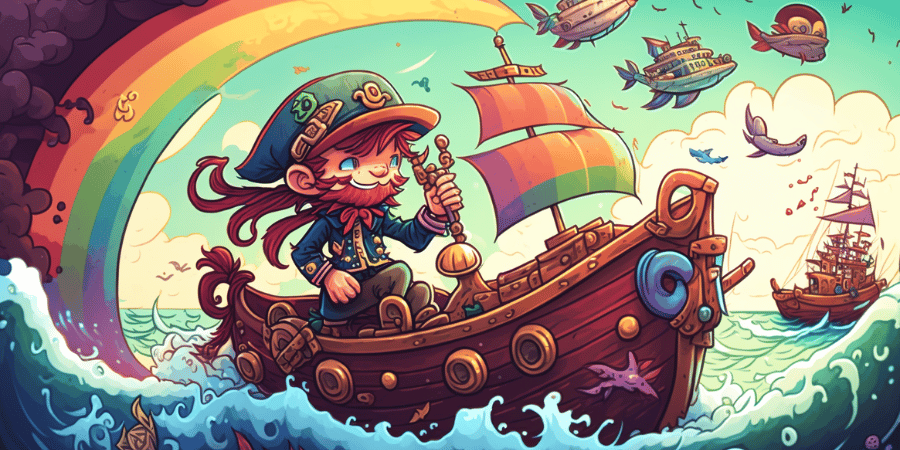
Creating and printing a children’s book can be a rewarding experience. In this comprehensive guide, we will walk you through the entire process of how to print a children’s book, from conceptualizing your idea to holding a beautifully printed copy in your hands. Let’s get started!
Before you can print a children’s book, you need a compelling story and engaging characters. Take the time to develop your plot, create memorable characters, and think about the message or moral you want to convey. Make sure your story is age-appropriate and appeals to your target audience. You can brainstorm ideas, make an outline, or even write a rough draft at this stage.
Illustrations play a crucial role in children’s books, capturing the attention and imagination of young readers. Consider the tone of your story and the preferences of your target audience when choosing an illustration style. You can collaborate with a professional illustrator, or if you have the skills, create the artwork yourself.
When working with an illustrator, establish a clear communication channel, provide a detailed brief, and discuss deadlines and payment terms upfront. Remember to give constructive feedback and allow room for creative freedom. Also, make sure to sign a contract outlining the terms of your collaboration.
Once your story and illustrations are complete, it’s time to refine your manuscript. Edit your text for grammar, punctuation, and consistency, ensuring the language is age-appropriate and easy to understand. You can enlist the help of a professional editor, or ask friends and family for feedback.
With your edited manuscript and illustrations in hand, it’s time to format your book. Choose a standard book size and decide on the best layout for your story and illustrations. You can use design software like Adobe InDesign or a dedicated book layout tool to create a visually appealing and reader-friendly design.
When formatting your book, consider the needs of all readers, including those with visual impairments or learning disabilities. Use clear, readable fonts, and ensure the text and illustrations are easy to see and understand.
There are several printing methods available, such as offset printing, digital printing, and print-on-demand (POD). Each method has its pros and cons, so consider factors like cost, turnaround time, and print quality when making your decision.
After choosing a printing method, research and select a reliable printer. Look for a company with experience in printing children’s books, as they will understand the specific requirements and challenges of the genre.
Before the final print run, you’ll receive a proof of your book to review. This is your chance to catch any errors, make last-minute changes, and ensure everything looks perfect. Once you’re satisfied with the proof, give the printer the go-ahead for the final print run.
The cost of printing a children’s book depends on several factors, including the printing method, book size, page count, and the type of paper and binding used. Offset printing tends to be more cost-effective for larger print runs, while digital printing and POD are better suited for smaller print runs or self-publishing. Request quotes from multiple printers to find the best price for your specific needs.
The ideal word count for a children’s book varies depending on the target age group. For picture books, aim for 500-1,000 words. For early readers, 1,000-2,500 words are suitable, while chapter books for older children can range from 5,000 to 25,000 words. Keep in mind that these are general guidelines and that the most important aspect is to ensure your story is engaging and age-appropriate.
The printing timeline for a children’s book depends on factors like the printing method, the complexity of the design, and the printer’s workload. Generally, digital printing takes 1-2 weeks, offset printing can take 4-6 weeks, and POD services can produce books within days. Make sure to account for extra time needed for proofing, shipping, and potential delays.
Children’s books come in various sizes, but some common dimensions include 6×9 inches, 7×10 inches, and 8.5×11 inches. Choose a size that works well with your story and illustrations and appeals to your target audience. Consult with your printer to determine the best size for your book, taking into consideration factors like cost and print quality.
Marketing your children’s book effectively is essential for reaching your target audience and generating sales. Some strategies to consider include building a strong online presence, engaging with readers on social media, setting up a website or blog, reaching out to book reviewers and influencers, organizing book signings and readings, and collaborating with schools and libraries. Be prepared to invest time and effort in marketing your book to ensure its success.
Printing a children’s book can be a fulfilling journey, allowing you to share your story and illustrations with young readers around the world. By following this step-by-step guide, you’ll be well on your way to creating a beautiful and engaging children’s book. Remember to focus on quality, originality, and accessibility, and don’t be afraid to seek the help of professionals along the way. Happy printing!
